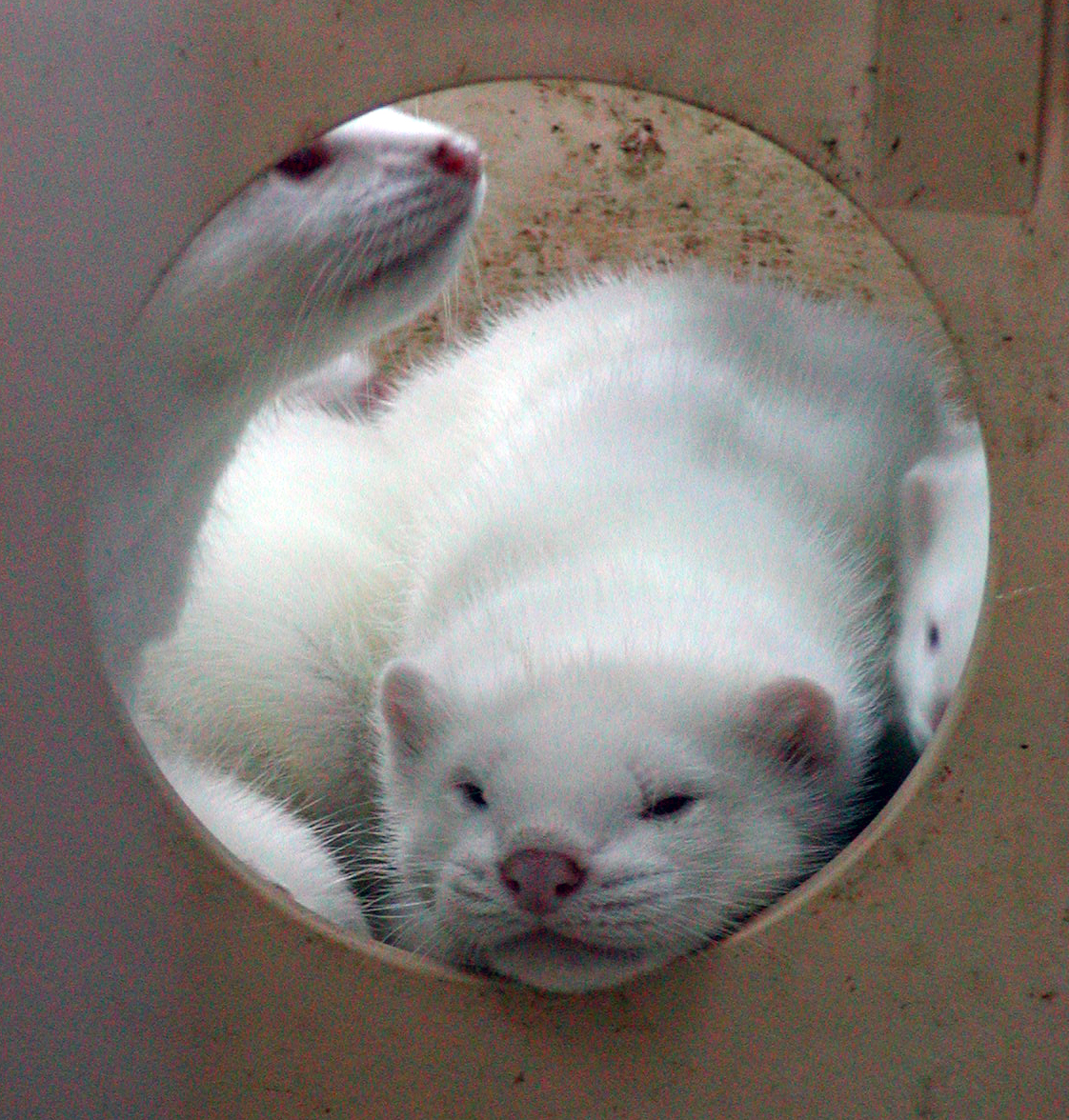Breeding confident mink can have side benefits
When you select for confident mink in the breeding programme, you may also be breeding for a better fur quality according to a study from Aarhus University. The study also shows that behaviour has a higher heritability than previously thought.

Mink that are confident by nature are easier for the mink farmer to work with. They also get less stressed when handled. These are two good reasons why mink farmers include this trait when selecting animals for breeding. A study from Aarhus University now shows that there is yet another benefit of breeding confident mink: They have a better fur quality.
The same study also shows that mink behaviour is a more heritable trait than hitherto believed. A high heritability means there is a good chance of increasing this trait in the mink stock.
You can select for confidence
Postdoc Janne Thirstrup from the Department of Molecular Biology and Genetics, Aarhus University, has studied the genetic correlations between behaviour and other financially important traits in mink. She found that there is a strong correlation between the quality of the pelt and the confidence exhibited by the mink.
- Our study shows that both confident and fearful behaviour in mink is subject to considerable genetic influence. This means it is possible to select for confident mink, explains Janne Thirstrup.
By selecting for confidence in mink, the animals will experience less stress when handled and thus achieve better welfare. The handlers will be able to handle the mink without the risk of being bitten and without having to work in a noisy environment because of the minks’ loud cries.
According to Danish regulations, fearful mink may not be used for breeding for health and welfare reasons. The main goal of breeding mink is to produce pelts of a high quality and good size – and preferably as many as possible per breeding female. It is therefore relevant to examine whether the selection for a confident nature will affect the financially important traits in a positive or negative manner.
Confident animals have nicer fur
The researchers examined data on the size and quality of 10,480 mink born in 2013-2014 at the mink farm at Aarhus University’s Foulum research centre. For the animals that were born in 2014, the researchers also measured the level of confidence exhibited by the animals using a so-called stick test. The test involves recording whether a mink bites, flees or simply sniffs at a stick that someone holds in front of it. The mink’s response to the stick reveals whether the animal is aggressive, fearful or confident.
The analysis of the data showed that the genetic link or correlation between behaviour and fur quality is high. On a scale from 0 to 1, where 0 represents no correlation and 1 is a perfect correlation, behaviour and fur quality had a correlation of 0.38 for males and 0.42 for females. Since the correlations are positive, it means that selection for confident mink has a favourable effect on the quality of the pelt.
There was a weaker correlation between behaviour and respectively pelt size and body weight, but these correlations were not significant.
- Behaviour is a highly heritable trait that makes it possible to select for confident mink more effectively than previously thought. There will be a positive correlation to fur quality so that a selection for more confident mink will also mean a selection for better fur quality, says Janne Thirstrup.
The study, which was financially supported by Kopenhagen Fur, was discussed at the annual mink seminar held at Foulum on 15 September.
For further information please contact: Postdoc Janne Thirstrup, Department of Molecular Biology and Genetics, e-mail: janne.thirstrup@mbg.au.dk, telephone: +45 8715 7619
